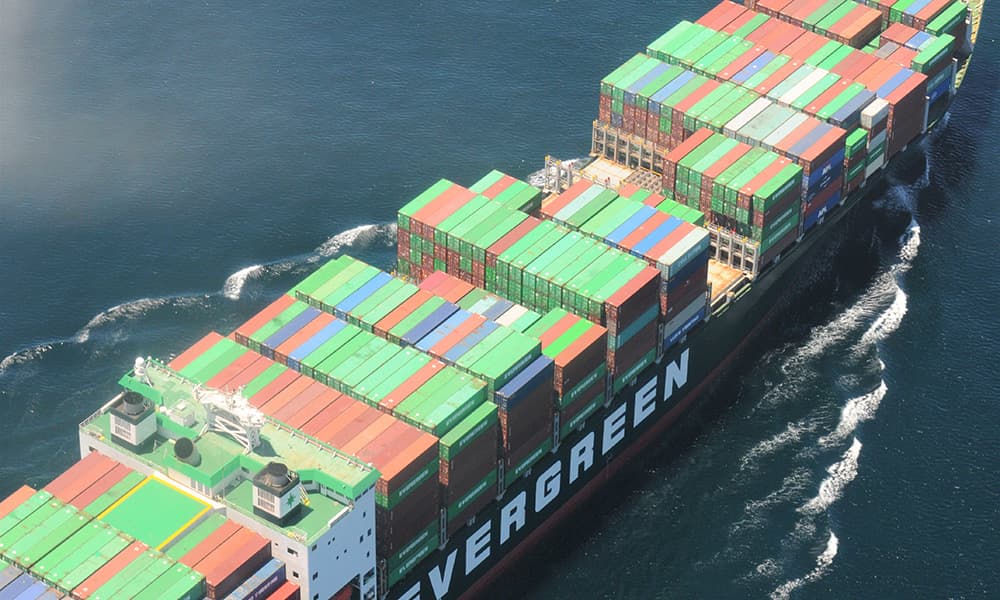Voluntary Vessel Speed Reduction Requests

Container ships are of the largest vessels that transit through the sanctuaries. Credit: Jess Morten/NOAA
NOAA annually issues voluntary vessel speed reduction (VSR) requests that are scheduled to be in effect May 1 to December 31 off San Francisco, Monterey, and Southern California. The goal is to reduce the risk of fatal ship strikes to endangered blue, fin, and humpback whales, reduce ocean noise and reduce air pollution to protect public health within and near Greater Farallones, Cordell Bank, Monterey Bay, Chumash Heritage, and Channel Islands national marine sanctuaries. These species are protected under the Endangered Species Act (16 U.S.C. 1538 et seq.), the Marine Mammal Protection Act (16 U.S.C. 1361 et seq.), and the National Marine Sanctuaries Act (16 U.S.C. 1431 et seq.). Any unauthorized take of whales even if unintentional, by vessels transiting in U.S. waters, violates federal statutes.
In 2025, the southern VSR zone was expanded to include Chumash Heritage National Marine Sanctuary.
NOAA requests that all vessels 300 gross tons (GT) or larger reduce speeds to 10 knots when transiting within the designated VSR zones. We request cooperation with the voluntary VSR to protect the health of communities living near these zones, and whales that annually migrate to and through these zones. All transits by vessels 300 GRT or larger are analyzed by NOAA via automatic information system (AIS) data provided by the U.S. Coast Guard to assess the industry's cooperation.
We encourage vessel crews to report whale sightings through the Whale Alert App.

Protecting Blue Whales and Blue Skies Program
Protecting Blue Whales and Blues Skies complements the NOAA voluntary VSR effort through an incentive based approach. Protecting Blue Whales and Blue Skies is a coalition of government agencies, nonprofit organizations, shipping industry, and cargo owners working together to reduce air pollution, ocean noise, and ship strikes on endangered whales in Southern California, the San Francisco Bay, Monterey Bay, and Central Coast regions. Container, car carrier, tanker, and bulk carrier shipping companies are eligible to enroll in the program. Shipping companies that cooperate at a high level in the NOAA VSR zones are acknowledged with positive public relation incentives, including media and an award ceremony.
For more information please visit Protecting Blue Whales and Blue Skies and Santa Barbara County Air Pollution Control District's Marine Shipping Initiative's websites for additional program details.


